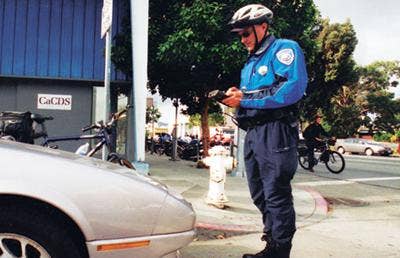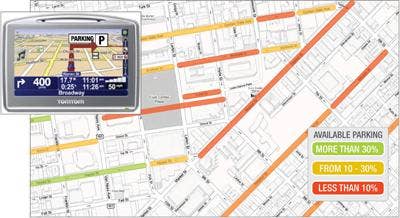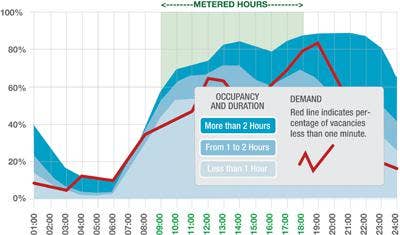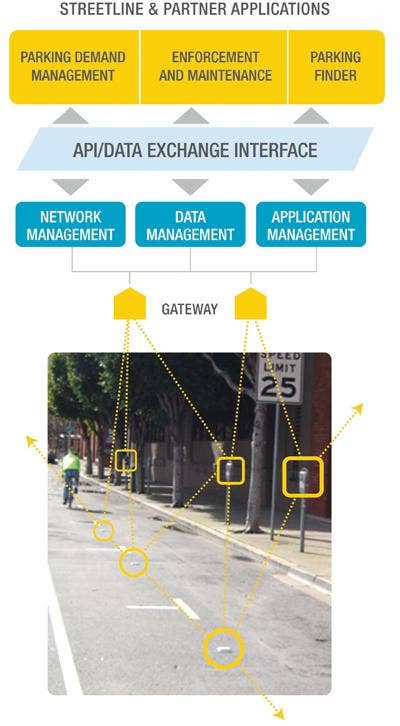Smartphones Could Relieve San Francisco Parking Woes

Too many cars and too few parking spaces leave many San Franciscans frustrated and angry. In an extreme example, a man was stabbed to death in 2006 following a dispute over a parking space. And after circling blocks and burning precious gas, once a coveted space is found, parkers risk what they say is overzealous enforcement of parking violations.
In an attempt to remedy the situation, the city has partnered with SF-based Streetline Inc. in a pilot program. Technology developed by Streetline uses sensors that monitor parking spaces. Drivers are then instantly alerted to vacant spaces via smartphones, GPS navigation systems and dynamic message signs on the street.

Streetline delivers Web-based and mobile applications core systems that were originally commissioned by the U.S. Department of Defense. According to The New York Times, the city plans to test 6,000 of its 24,000 metered parking spaces this fall.
"Cities can reduce congestion and unclog their downtowns, while increasing the number of people who can visit," said Tod Dykstra, Streetline's Founder and CEO, in a statement. "We won't need to build new garages, because we'll be getting that much more capacity out of the existing stock, and there'll be more available curbside parking for drivers."

It's not only drivers that will benefit from the technology. Streetline will gather data from the program and provide parking analysis reports to the city. The information can then be used to help the city improve parking management, such as time limits and pricing.
"Streetline can provide us with information that no one has ever been able to get before," said Tina Olson, deputy director of finance for the Port of San Francisco. "What exactly are the occupancy and turnover rates in all the parking spots we're responsible for managing? Until we know what's going on out there, we can't know how to improve our parking program. And, once we improve it, we need to know how our changes affect visitation and driver behavior."

A wireless signal is emitted by small sensors that have been tacked on to, or shallowly embedded in, the street. The vehicle sensor has been built to deliver continuous detection and communications for five to 10 years. The pavement-embedded model is designed for snow plowed areas where surface-mounted sensors would interfere with snow clearing. The surface-mounted sensor was designed to deliver continuous detection and communications for five to 10 years on its own internal power supply.
Dust Networks is the wireless sensor network (WSN) provider for Streetline's City Infrastructure Technologies (CiT) Platform. Dust Networks' SmartMesh manager product combines highly integrated gateways with sophisticated networking, data and security management functions and an open XML-based application programming interface (API).